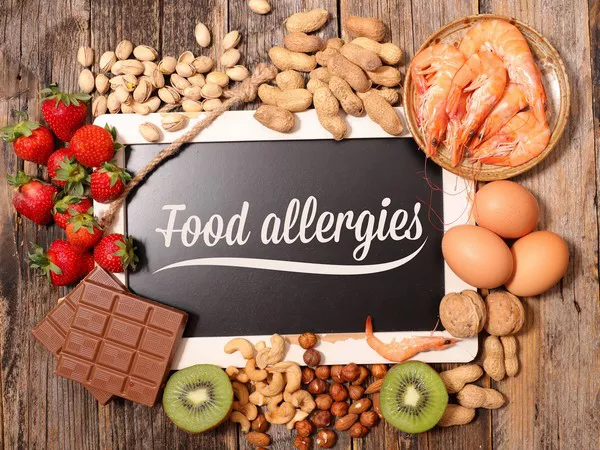Food allergies are a significant concern for individuals of all ages, with adverse reactions ranging from mild discomfort to severe complications. In adults, pinpointing the most common food allergy is crucial for proper diagnosis, prevention, and management. In this article, we delve into the prevalence of food allergies in adults, identify the most frequent allergens, examine symptoms, and provide insights into effective management strategies.
Prevalence of Food Allergies in Adults
1. Growing Awareness: In recent years, heightened awareness of food allergies has led to improved diagnosis and reporting. This has contributed to a clearer understanding of the prevalence of food allergies in adults.
2. Varied Estimates: The prevalence of food allergies varies based on factors such as geographic location, cultural practices, and genetic predisposition. Reliable estimates suggest that between 1% and 3% of adults worldwide experience food allergies.
Identifying the Most Common Food Allergen
1. Peanuts: A Leading Allergen: Peanut allergy is recognized as one of the most common food allergies in adults. This allergy can manifest in various forms, ranging from mild to severe reactions.
See Also: Peanut Allergy: Things You Need to Know
2. Tree Nuts: Close Contender: Tree nuts, such as almonds, walnuts, and cashews, also rank among the top allergens. Cross-reactivity among different tree nuts can contribute to the challenge of managing tree nut allergies.
Symptoms of Food Allergies in Adults
1. Gastrointestinal Symptoms: Adults with food allergies may experience gastrointestinal symptoms such as nausea, vomiting, abdominal pain, and diarrhea shortly after consuming the allergenic food.
2. Skin Reactions: Skin reactions are common allergic responses and can include hives (urticaria), eczema, itching, and swelling around the mouth or face.
3. Respiratory Symptoms: Adults with food allergies may develop respiratory symptoms, including nasal congestion, sneezing, coughing, wheezing, and shortness of breath.
4. Anaphylaxis: Severe Reaction: Anaphylaxis is a severe, potentially life-threatening allergic reaction that requires immediate medical attention. Symptoms may include difficulty breathing, rapid drop in blood pressure, and loss of consciousness.
See Also: 8 Common Symptoms of Food Allergies
Diagnosis and Management
1. Accurate Diagnosis: Accurate diagnosis of food allergies involves a combination of medical history, allergy testing, and elimination diets. Allergy testing can include skin prick tests and blood tests to identify specific allergens.
2. Avoidance Strategy: The primary management strategy for food allergies is to avoid consuming the allergenic food. This requires careful reading of ingredient labels, understanding cross-contamination risks, and informed dining choices.
3. Emergency Action Plan: Individuals with known food allergies, especially those prone to anaphylaxis, should have an emergency action plan in place. This plan includes the use of epinephrine (adrenaline) injectors and seeking immediate medical attention.
Emerging Therapies and Research
1. Immunotherapy: Immunotherapy, such as oral immunotherapy and sublingual immunotherapy, involves controlled exposure to allergenic proteins to build tolerance. While promising, these therapies are still undergoing research and evaluation.
2. Identifying Hidden Allergens: As the understanding of food allergies deepens, researchers are exploring the presence of hidden allergens in unexpected sources, such as processed foods, beverages, and cosmetics.
3. Cross-Reactivity: Cross-reactivity occurs when the body reacts to similar proteins found in different foods. Understanding cross-reactivity patterns can help individuals avoid allergens.
Living with a Food Allergy
1. Social and Emotional Impact: Living with a food allergy can impact an individual’s social life, daily routines, and emotional well-being. Effective communication about allergies is essential, especially in social settings.
2. Allergen-Free Alternatives: Fortunately, the market offers a variety of allergen-free alternatives for common food allergens. These alternatives allow individuals to enjoy a wide range of foods while avoiding allergens.
See Also: 8 Most Common Highly Allergy Foods
Conclusion
In conclusion, the most common food allergy in adults often revolves around allergens like peanuts and tree nuts. As awareness and understanding of food allergies increase, accurate diagnosis, proper management, and effective prevention become critical. Symptoms of food allergies can range from mild discomfort to life-threatening anaphylaxis, emphasizing the importance of prompt medical attention and emergency preparedness. While avoidance remains the primary strategy, emerging therapies and ongoing research offer hope for improved management and quality of life for adults with food allergies. By staying informed, following medical advice, and practicing vigilance in dietary choices, individuals can successfully navigate life with a food allergy and prioritize their health and well-being.


